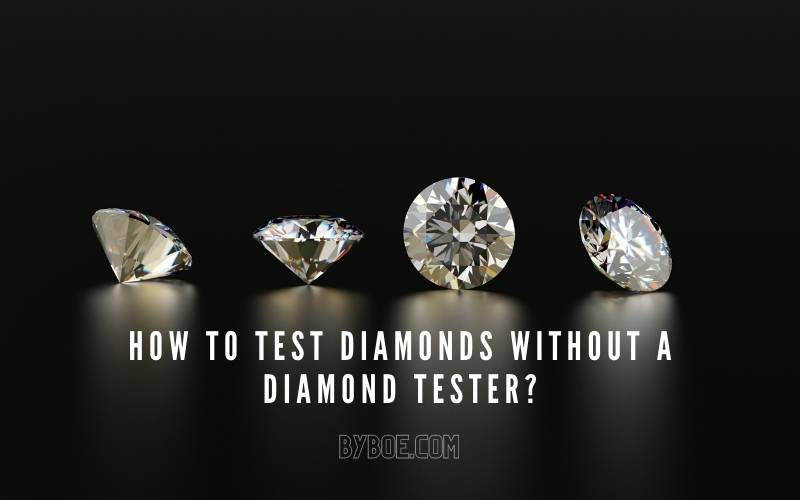While searching for the perfect diamond ring can be extremely exciting, the more information you have, the better. Too many people are misled when it comes to certain aspects of diamonds and end up paying a pretty penny for something that is not worth as much as they thought.
Before you begin your hunt, ensure you know how to properly test a diamond using what you have at home and save some money too! Keep reading this article; Byboe will show you How to Test Diamonds Without a Diamond Tester? and other tips.
Table of Contents
Real vs. Fake Diamond: How to Tell if a Diamond Is Real
Before getting into the home tutorials, it is essential to understand the differences between mounted and unmounted diamonds. Determining if a diamond is natural will depend on whether it is set in a mount or loose.
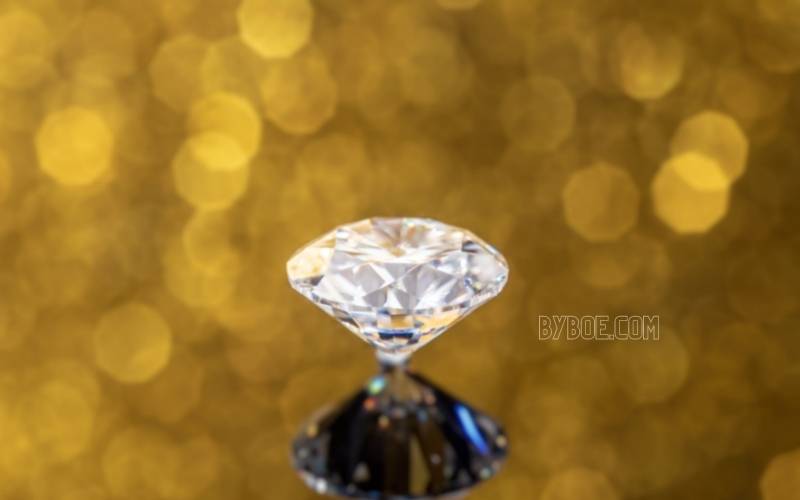
It is easiest to check a loose diamond or one that has not been mounted in a set for authenticity and determine if it has flaws.
Mountings on mounted diamonds can conceal potential imperfections, cracks, or chips. The props can also reflect light into the diamond, making it difficult for anyone other than a professional jeweler to evaluate the stone’s clarity and color.
You might ask your jeweler to remove a mounted diamond so that you can inspect it properly while it is still loose.
“Occasionally, there are stones that we encounter that aren’t natural diamonds. Judd Rottenberg is the principal of Long Jewelers and a graduate gemologist at GIA. He is also a certified gemologist at AGS. Laser drilling and fracture fill, for example, can be used to make a stone look better.”
Rottenberg states that a common misconception is that fake diamonds and natural diamonds are the same. Rottenberg says that while a diamond and cupid zirconia might look very similar at first glance, over time, cubic zirconia will lose its brilliance and eventually look worn.
It’s not as tough as a diamond, and it won’t last as long. If you are unsure whether it is a real diamond, the test of time can tell you. However, there are other methods to verify the authenticity of your loose stone.
It’s now time to examine your diamond. Although you can perform each test on either a mounted or loose diamond, it is easier to tell the difference between a real and fake diamond when you have a loose one.
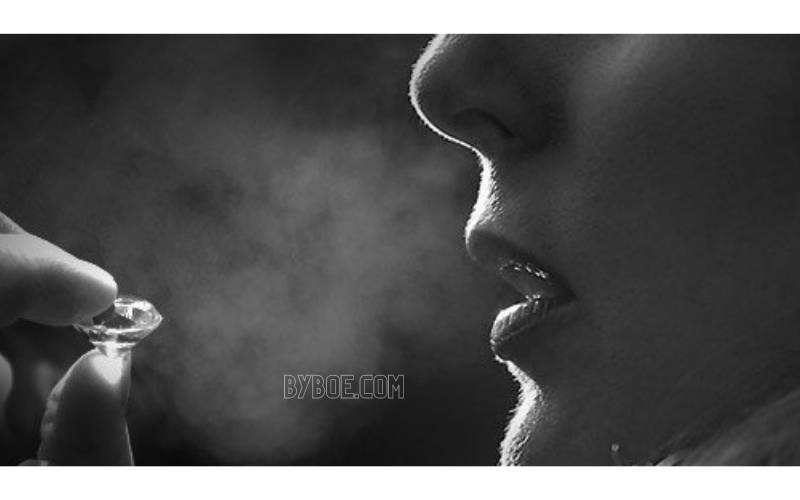
Test with Fog
Place the diamond in front of you and fog test it with your breath to determine accuracy. Fog test can last for only a few seconds and signifies a fake diamond. Since condensation doesn’t stick on the diamond’s surface, a natural diamond won’t get fogged up easily.
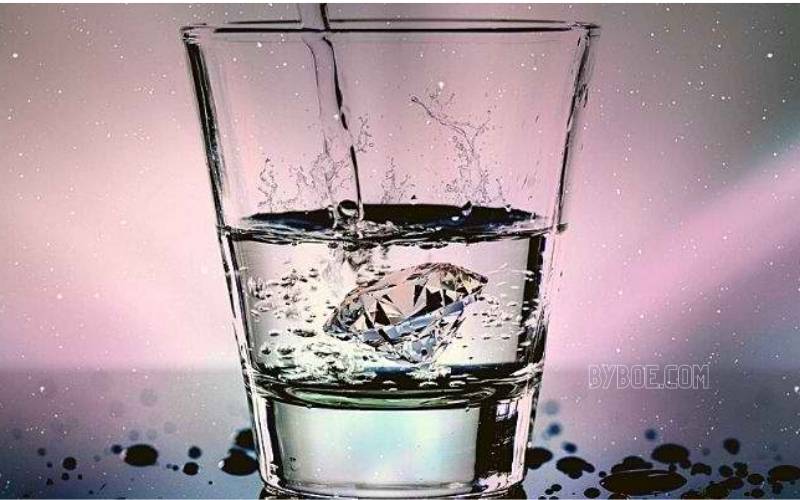
Test with Water
This is the easiest: Fill a glass with water. It doesn’t matter which type of water you use. Drop the diamond in the glass of water.
Because of the diamond’s high density, a natural diamond will sink when dropped into water. It’s a fake diamond if the diamond doesn’t float to the top of the glass. It’s just physics.
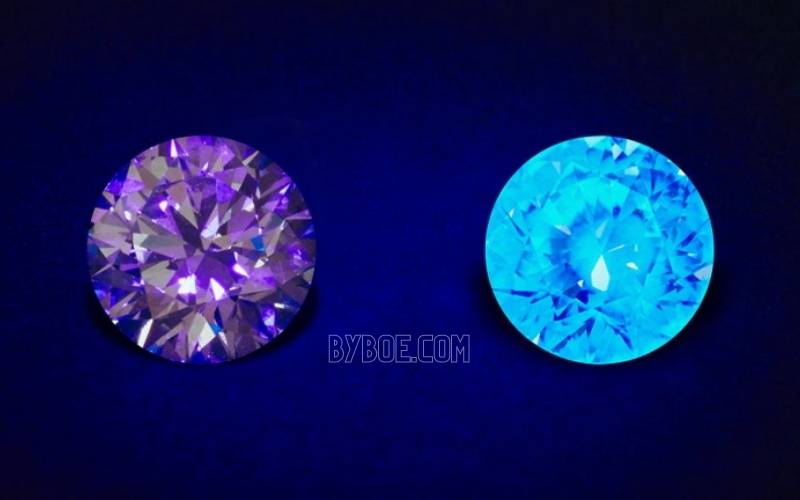
Test With a Black Light
This one will require a black light. After you have the black light, turn the lights off and place the diamond in front of the black light. A majority of diamonds will show blue fluorescence when placed under black light.
This indicates that the diamond is genuine. If the gem doesn’t show the actual blue color but offers a little green, yellow, or grey fluorescence, it is most likely not a genuine diamond. However, this is not a conclusive test. Not all diamonds will show blue fluorescence.
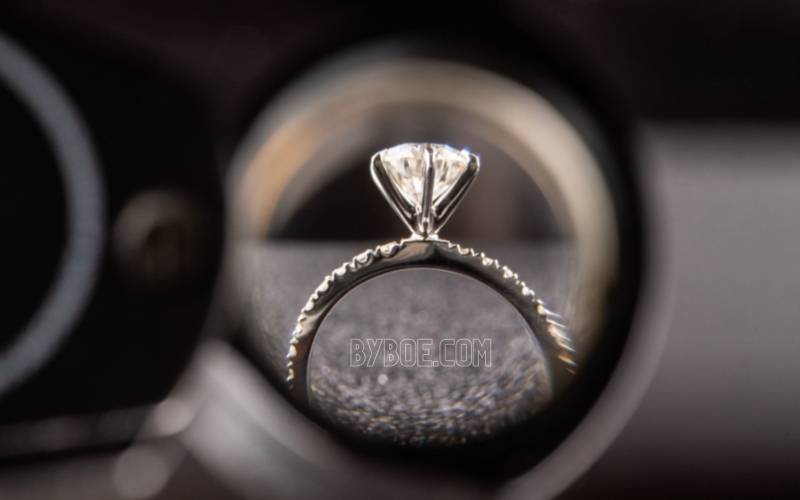
Test With a Loupe
A loupe is a magnifying device that allows jewelers to view small details in close-ups. A loupe is a magnifying device with a more petite lens frame and an attached handle.
When inspecting diamonds for clarity and class, most jewelers use loupes. It’s a shame you don’t own one. Amazon offers a wide range of loupes at a very affordable price.
Once you have one, take a look at the loupe and look for inclusions. The imperfections that are found in mined diamonds indicate their authenticity. Next, look for specks or color changes.
The diamond is most likely accurate if visible flecks and color change. Keep in mind not all diamonds are perfect. This doesn’t necessarily mean you are dealing with a fake.
However, it can indicate that you’re dealing with a rare, ideal diamond. Although most real diamonds have some imperfections, this is not a definitive way to determine genuinely. Because lab-created diamonds are made in controlled environments, they don’t usually have imperfections.
How can you tell if a genuine diamond is natural? These five home tests will help you determine if your diamond is genuine. These tests are not foolproof but will give you an idea of whether your diamond is worth trusting.
It is essential to know that if you are unsure whether your diamond is real, especially if it failed one or more of these at-home tests, it is best to have it evaluated by a professional jeweler.
You will get more information on your stone, and you can rest assured that your diamond will not fade over time. They are also experts at determining if a particular diamond is genuine.
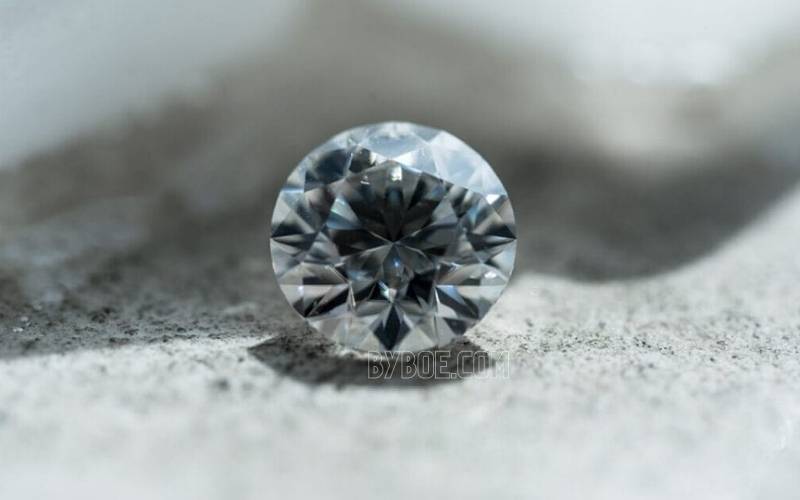
Test By Scratching
This test considers that Diamonds, one of the most vital substances on Earth, can cut through glass. This is called the scratch test. It will prove whether it is a real diamond or a fake diamond. You will need a plate of glass and your diamond.
Place the glass on a platform and scratch the surface with your diamond. You can tell if your diamond is genuine if you cross it. If it doesn’t, it is fake.
This could cause the glass to crack. The scratch test is not the best way to test your stone’s quality, as many other gems can replicate it.

Test By Heating
Due to their solid material construction, diamonds are resistant to heat. This is also called the heat test. To perform the heat test, you will need a glass full of cold water, some fireproof gloves or players, and a lighter.
The stone should be heated for approximately 40 seconds before being dropped into cold water. The stone that breaks is a sign that it is fake. Real diamonds would not react to this. This shows the strength of the stone.
Due to the constant quick expansion and contraction of heat, weaker materials and gems like zirconium can crack. For example, Pyrex dishes can be used to cook. The word could shatter if you wash it right away after removing it from the hot oven.
Because diamonds are one of the strongest metals on Earth, they can withstand extreme heat. They are capable of dispersing heat quickly, so temperature changes do not affect them.
Transparency Test
To make this test work, you will need a newspaper. Your diamond must be clean. Place your diamond on its side, the pavilion facing upwards, in a section or newspaper.
Your diamond may be fake if you can read the letter through it. If the letters appear blurry, your diamond is likely accurate.
The Dot Test
This alternative to the Transparency Test can be used with regular white paper. Use a pen or a pencil to make a small mark on your piece of paper. Next, lay the diamond flat side down onto the dot.
The pointed end of the diamond is reflected onto the paper. It is fake if you can see the circular reflection inside the stone. You have a genuine diamond if you can’t see the review inside the rock.
Diamond is known for its excellent refractive properties. It bounces light in different directions than a straight line. You cannot read letters through an authentic, natural diamond.
Test The Sparkles
Your smartphone and your diamond may be all you have at the moment. You’re good if your phone has a torch. With a flashlight, you can check if the ring is genuine.
This is a quick and simple test that only requires your eyes. A diamond’s brilliant reflection is what gives off powerful sparkles. Hold your diamond in front of a regular lamp to see the sparkling and bright colors.
Diamonds also make stunning displays due to their beautiful reflections of fire and color. You’ll be able to see the significant difference in their thinking and colored light, which is unlike other stones like Cubic Zirconia. Cubic Zirconia emits a notable rainbow-colored light.
You may need to test other methods because this isn’t a 100%-proof method.
Inspection Under Ultraviolet (UV) Light
Blue fluorescence is a characteristic of most diamonds, but not all. It can be seen when the diamonds are exposed to ultraviolet light or black lights. This diamond lighter tester will confirm that your diamond is genuine.
It might not show the same blue light. Some diamonds are not fluorescent under ultraviolet light. A slight fluorescence may identify Moissanite in green, gray, and yellow light. The UV test can only narrow down the possibilities.
This test is not the final determinant. Fake diamonds could be mistaken for real ones. Doping is the process of removing counterfeit diamonds from the market.
When diamonds glow under UV light, it is treated to make them shine. You can observe the reaction of a diamond under UV light.
Testing a Real Diamond with High Profile Weighing
Gemologists and jewelers often have accurate scales for measuring tiny differences in weight. A natural diamond’s weight will be less than fakes like Cubic Zirconia, but only Carat scales detect such minor differences.
You will need a fake diamond of approximately the same size and shape to perform the test. This stone can be used as a reference for the diamond you are looking at.
What are Synthetic Diamonds?
Also known as a laboratory-grown diamond, a synthetic diamond can also be called a cultivated diamond. You can also call them cultured, cultivated, lab-created, artificial, and synthetic diamonds.
They can be manufactured artificially and are not like real diamonds formed on the Earth. It can be described as real diamonds. They are created artificially above the ground, which is different from natural diamonds.
Our tests cannot identify lab-created diamonds. This is because most lab-grown diamonds or lab-created diamonds have a small inscription that identifies them as lab-grown. Sometimes, you might find small writing on the girdle for the lab-created or real diamonds.
What are Diamond Simulants?
Simulants of diamonds fall under the umbrella of imitation diamonds, which are stones with similar geological characteristics to the real diamond.
Synthetic diamonds are different from Diamond Simulants. On the other hand, it are natural diamonds with the same material properties and characteristics as real diamonds. Our tests can distinguish a simulant diamond from a real diamond.
These are perfect home tests for fake diamonds. While some tests are suitable for loose diamonds, others work well with diamonds that have been set.
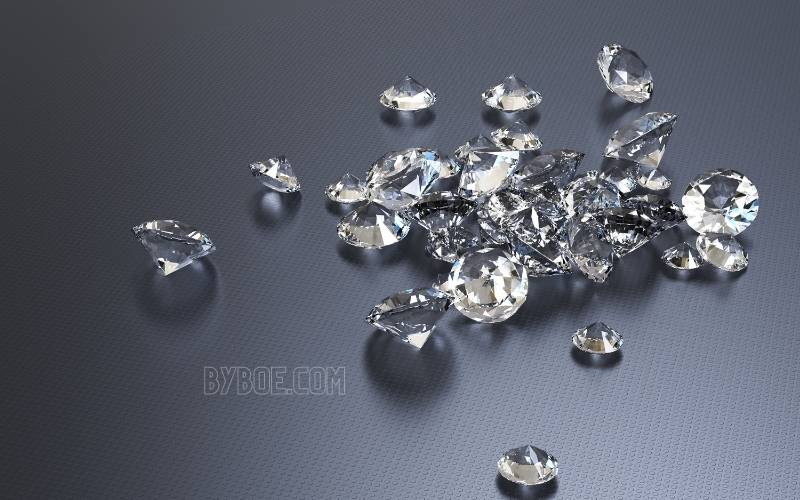
Testing a Real Diamond Vs. Moissanite
It is essential to use tools from a jeweler to check for genuinity due to the increased availability of synthetic Moissanite. These tools can quickly determine a diamond’s authenticity or not.
Examining Using a Microscope
Using a powerful microscope, a jeweler or gemologist can examine the stone with a 1200x magnification. This magnification will allow them to see the inclusions and differences in real diamonds compared to Moissanite.
Get an X-ray Examination
Send the stone to a professional lab for testing. The x-ray machines of a professional diamond lab will tell you if the stone is radiolucent or radiopaque. Diamonds are radiolucent, while fakes such as crystals and cubic zirconium have radiopaque characteristics.
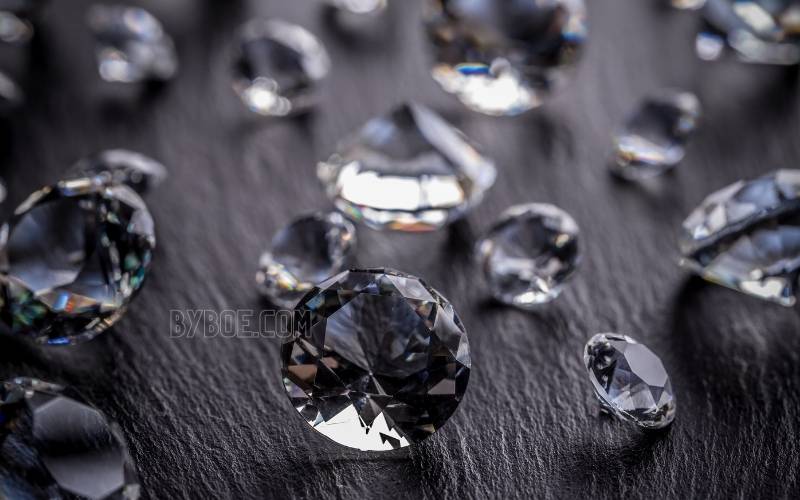
How to Spot Other Stones That Aren’t Real Diamonds
These steps will help you spot a stone that may look similar to a diamond, despite its popularity.
How to Recognize Synthetic Diamonds
It is essential to distinguish between synthetic and natural diamonds due to the increasing popularity of synthetic diamonds. They are similar in chemical and molecular properties to natural diamonds.
We recommend having the diamond examined by an expert due to its complex internal characteristics. A professional can perform a conductivity test on the diamond and examine it under high magnification.
It is essential for insurance and resale values, even though it may not be obvious how synthetic diamonds differ from real diamonds.
How to Recognize Cubic Zirconia
One of the most accessible fake diamonds to authenticate is cubic zirconia. It’s easy to determine the level of sparkle and fire in a stone by using the sparkle test.
In addition, cubic zirconias reflect orange-tinted light. They are also heavier than real diamonds and don’t usually have inclusions or imperfections. Inclusions in natural diamonds can be seen with the naked eye or by a diamond expert’s microscope.
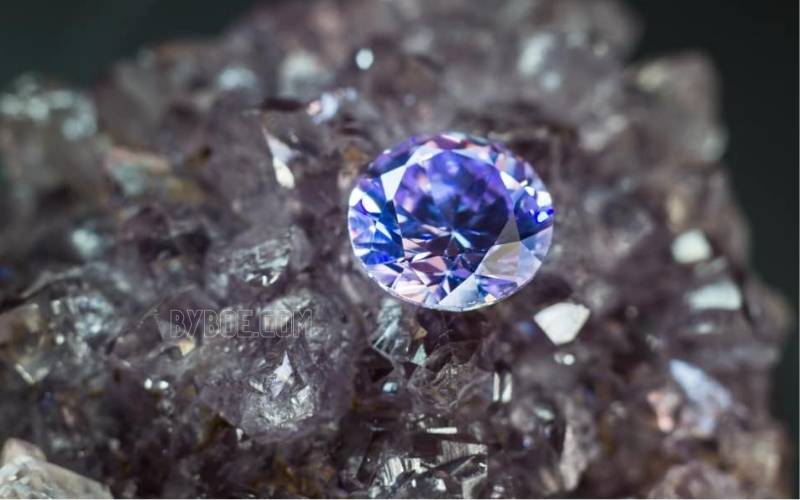
How to Recognize White Sapphire
Sapphires come in a variety of colors, including blue. While white sapphires can often be posed like diamonds, they don’t have the same sparkle or contrast between dark and light areas as diamonds.
The stone may appear more blurred, meaning it does not have different light or dark parts. This indicates it to be a white sapphire.
How to Recognize Moissanite
The synthetic Moissanite is perhaps the most prominent actor in the fake diamond industry. It is often difficult to distinguish between them, so it is best to consult a professional diamond expert.
Does moissanite pass diamond tester? yes, An electricity conductivity test can tell if the gemstone’s type is Moissanite or genuine diamond. The thermal conductivity test cannot recognize Moissanite, as they have a similar thermal conductivity to diamonds.
How to Recognize White Topaz
A white topaz might look similar to a diamond, but it has many distinct characteristics that differentiate it from a genuine diamond.
The exterior of white topaz is less complicated than a diamond and can be easily scratched by other materials. To see if there are scratches, you can magnify a white topaz. Because of their durability, diamonds won’t have scratches.
Conclusion
There are many ways to test it to see if diamonds are real without a diamond tester. One way is to use a loupe to look at the diamond. If you see any blemishes on the diamond, it is not natural. Another way to test a diamond is to place it in hot water.
But you should buy a device that will show you if a diamond is natural or not and if you are looking for the best diamond tester, we highly recommend StillCool Diamond Tester. We hope that our guide can help you know whether it is a real or not a real diamond.

